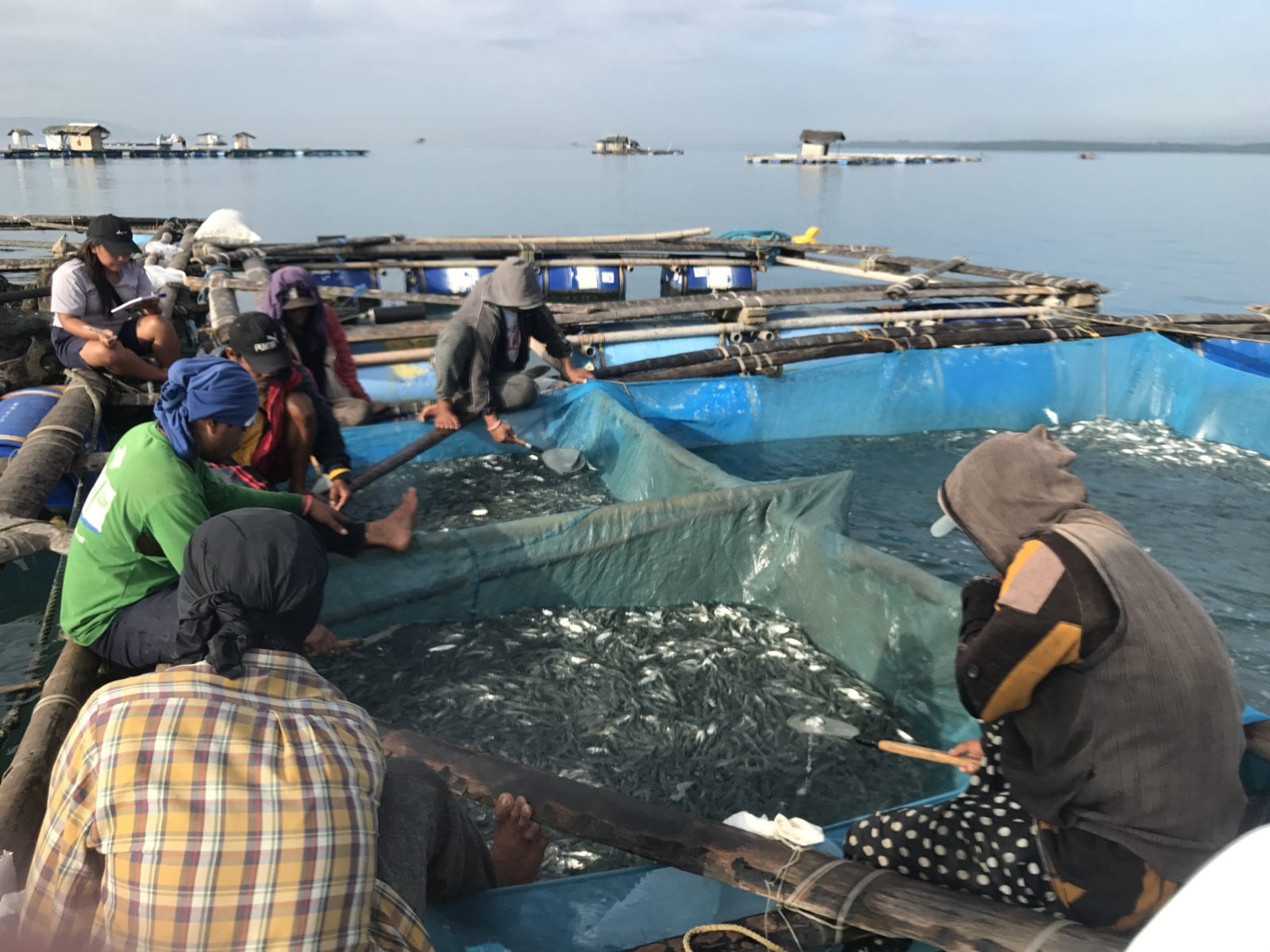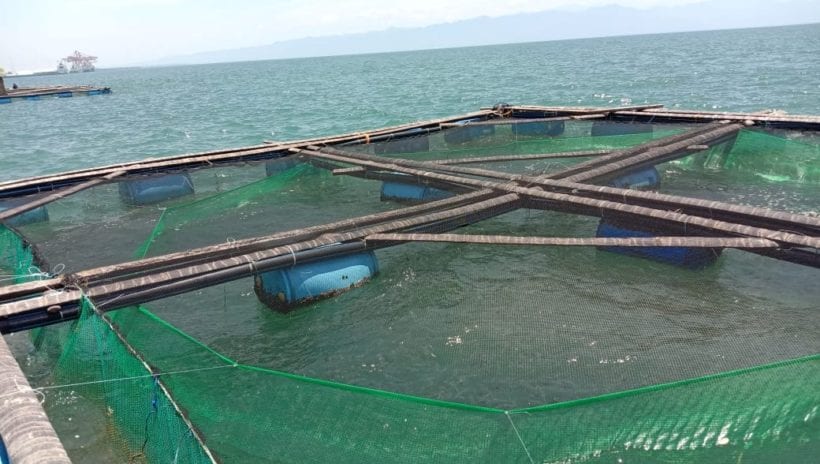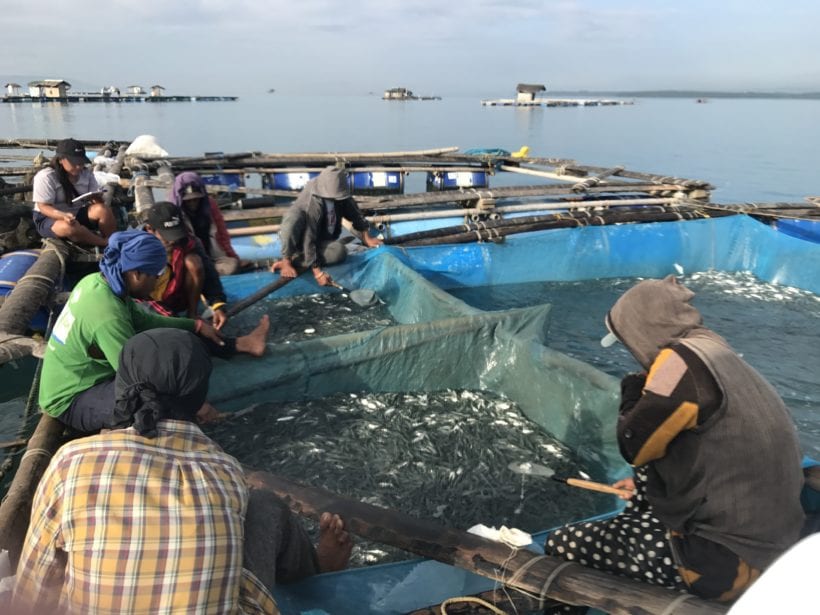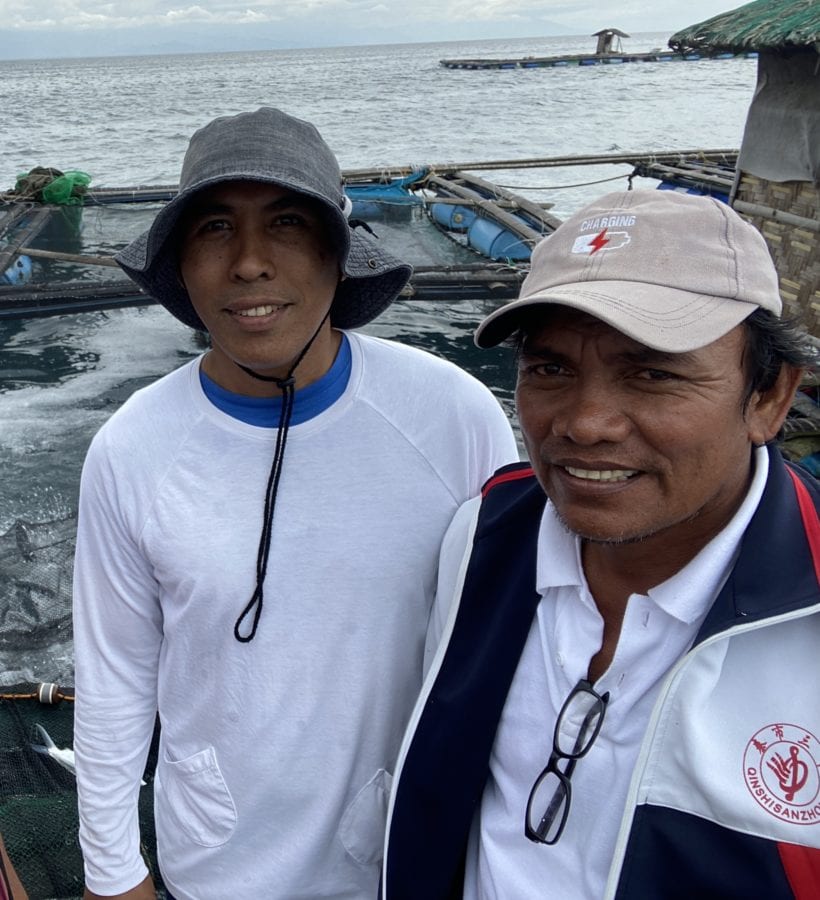Philippine Milkfish Farm Takes Part in Comparative Feeding Demonstration
- Category:
- Aquaculture
- General News

USSEC’s Soy in Aquaculture Program conducted the USSEC Milkfish Feed Comparative Feeding Demonstration Project at ALT Hatchery and Aquaventures Milkfish Cage Farm in Panabo City Mariculture Park, Panabo City, Davao Del Norte, Philippines on March 23. The objective of the feeding demonstration was to showcase the advantages of using a U.S. Soy-optimized diet for milkfish formulated by USSEC using its feeding methodology as compared to an available commercial milkfish diet.
This comparative USSEC milkfish feed demonstration project used six units of 10 meters x 10m x 4m or 400 m3 cages found on the cooperator's farm, with three cages using an USSEC soy-optimized milkfish formulated diet and another three cages used a commercial milkfish diet. Each cage was stocked with 17,500 pieces of milkfish fingerlings with an average size of 28 grams. Target harvest weight at harvest is 500 g. Target biomass per cage is 7,500 kilos per cage or 18.75 kilos per m3.
Milkfish (Chanos chanos) makes up the Philippines’ largest cultured aquaculture species by volume with total production of 409,906 metric tons (MT) or 51.4% of the total aquaculture fed species in 2019. Estimated annual feed requirement is 820,000 MT and continues to grow. Soybean meal inclusion in milkfish feed formulation averages about 45 to 55%.


